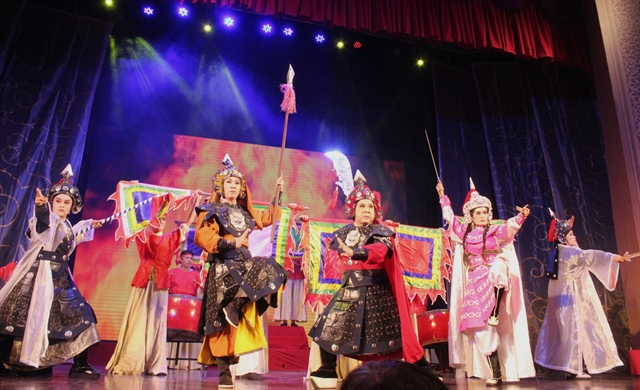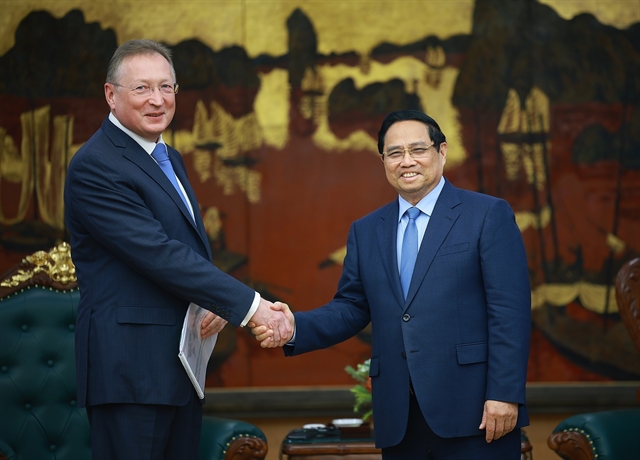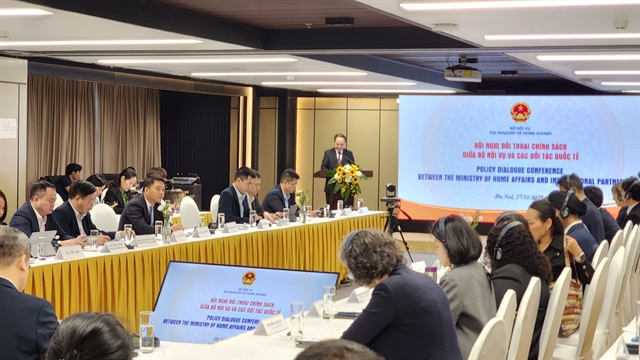 Life & Style
Life & Style

 |
| PRESERVING CULTURE: Traditional theatre artists of HCM City work to preserve cải lương (reformed opera), a traditional genre of southern theatre which began in the early 1920s in the Cửu Long (Mekong) River Delta region. — Photo courtesy of the HCM City Theatre Association. |
HCM CITY — The HCM City Theatre Association and its partners are working to release a series of books on cải lương (reformed opera), a traditional genre of southern theatre which began in the early 1920s in the Cửu Long (Mekong) River Delta region.
The books will include information, photos and documents about the history and development of cải lương.
Tuồng, a form of Vietnamese theatre that originated in the 17th century in the central region before expanding to central and southern Việt Nam, particularly the Cửu Long region, will also be featured.
Images of Cải Lương Nam Bộ Troupe, which opened in 1952 and attracted artists engaged in the revolutionary movement in the South, will be highlighted.
Cải Lương Nam Bộ Troupe was formed from three cải lương troupes in the region. The troupe sent its artists to perform at the National Music and Theatre Festival in Hà Nội in 1955 after the 1954 Geneva Agreement on Indochina was signed.
The troupe played a very important role in the theatre’s development in the South.
Its artists used their art to encourage southern people, intellectuals, poor farmers, and workers to be involved in the national revolutionary movement. They travelled around the region to offer shows featuring the activities of the Việt Minh (Việt Nam League for Independence) Committee of the South in August 1945.
Cultural researchers and veteran artists of cải lương and tuồng, such as People’s Artist Trần Ngọc Giàu and Tôn Thất Cần, have worked on writing and editing the books.
“Our books provide young people with better knowledge of Vietnamese theatre,” said theatre director Cần. “We hope readers can learn more about traditional songs, tunes and dances used in Vietnamese theatre."
 |
| TRADITIONAL ART: Tuồng, a form of Vietnamese theatre that originated in the 17th century in the central region before expanding to central and southern Việt Nam, will be featured in a series of art books released by HCM City Theatre Association this year. — Photo courtesy of the Bạch Long Tuồng Troupe. |
The first book, titled Sân Khấu Cải Lương TP HCM: 1975-2025 (The Developments of Cải Lương in HCM City between 1975 and 2025), will be introduced at a seminar organised by the HCM City Theatre Association in September.
The seminar on Vietnamese theatre will attract 40 veteran cải lương and tuồng artists who are old but still keep their art alive and perform it to younger artists.
The second book will feature 50 famous plays about Vietnamese history from different periods. The shows’ directors, scriptwriters and performers will be included.
One of the highlighted plays is Tiếng Trống Mê Linh (The Sounds of Mê Linh Drum), a production staged by Trần Hữu Trang Cải Lương Theatre, one of the region’s leading traditional art troupes.
The play was first staged in 1977 and has been restaged many times, attracting cải lương stars Thanh Nga, Ngọc Giàu and Bạch Tuyết.
It tells the stories of Trưng Trắc and Trưng Nhị, the two sisters who led the first resistance movement against Chinese occupation in the first century, around 2,000 years ago.
The sisters led their troops on elephants to repel Chinese invasions. Their victory delivered liberation for Đại Việt (an old name for Việt Nam) after 247 years of Chinese domination
The first and second books are scheduled to be released in December. — VNS




